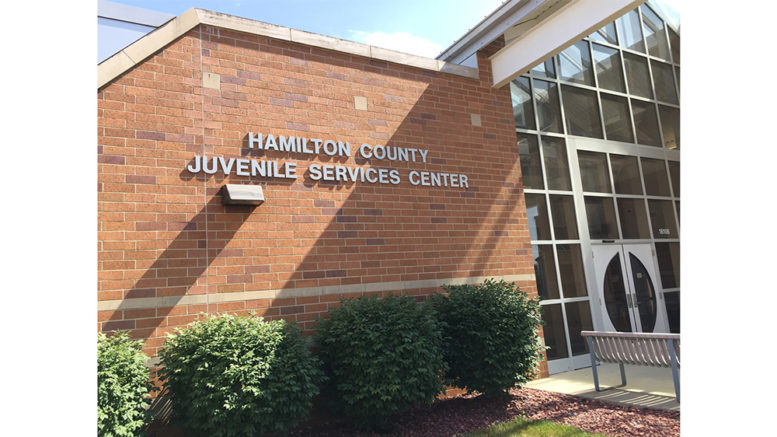When the Hamilton County Juvenile Services Center opened a decade ago, its secure detention facility housed an average of 22 minors each day. Last year, the average daily count was just nine.
The striking reduction in juveniles behind bars in Hamilton County didn’t happen overnight — it’s the result of years-long collaborative and an evolving risk-assessment process that allows Probation Department staff to focus their time and attention on the young offenders who need it the most.
Intake officers began using the Indiana Youth Assessment System risk-assessment tool in 2010, aiming to identify those least likely to commit another offense. Research has shown that best way to keep low-risk youth from reoffending is to keep them out of the criminal justice system in the first place.
“If you divert low-risk offenders before going to court, only about 14 percent come back into the system,” said Bob Bragg, assistant director of the Probation Department. “But if you bring them into system, put them on probation and make them go through a lot of programs, they come back at a much higher rate. It’s actually making them worse.”
Juvenile probation staff reviews police reports, interviews youth and their parents and conducts the risk assessment before making recommendations to the prosecutor. The lowest-risk cases are generally resolved without formal adjudication, as long as the minor completes any requirements and stays out of trouble. Juveniles who score in the moderate- to high-risk range — and those accused of more serious offenses — end up facing formal charges in front of a judge.
“The result of that is the numbers have continued to drop,” Bragg said. “And as we’ve seen lower recidivism rates, have less kids on our caseload, we’ve got more time to work with the higher-risk kids, who we can actually help.”
Research shows that time and effort spent on low-risk youth actually increases the likelihood that they will re-offend, while time and effort spent on moderate- and high-risk youth reduces the probability that they will re-offend.
“I have been extremely pleased with our juvenile probation team,” said Hamilton Circuit Court Judge Paul A. Felix. “They were one of the first to change the model of dealing with juveniles, and they have been leaders throughout the state. Their efforts have improved kids’ lives, increased community safety, and saved taxpayer dollars.”
An ongoing partnership with all six Hamilton County public school systems has contributed to the county’s progress, Bragg said. In addition implementing programs designed to diffuse issues before they require police intervention, the districts welcome on-site juvenile probation officers in all junior high and high schools.
“Before we were in the schools, if a kid started to have problem, we may not find out until the next appointment, which might be two or three weeks,” Bragg said. “Now, if a kids gets in trouble during first period, by lunchtime we know about it. It makes a big difference.”
Bragg said the county-wide Youth Assistance Program also has helped to keep juveniles out of the system. If a child is accused of a first-time status offense — truancy and curfew violations, for example — the prosecutor could send them directly to their local Youth Assistance early intervention advocate.
“Our efforts with the Youth Assistance Program (YAP) have reduced the numbers of children being referred to the juvenile system by providing services before children commit an offense,” Judge Felix said. YAP has also been used as a deferral option to the juvenile system for first-time offenders. “Having this option available has given our probation officers the opportunity to focus on the needs of those juveniles who have been referred to the juvenile system and who truly need supervision.”
All told, Juvenile Probation handled 920 referrals last year, down 43 percent from a 2009 peak and the lowest total in more than 20 years. And that’s with a staff of just 15 — half the size it was in 2007.
Now the county is working to build on its success by joining more than a dozen Indiana counties in the Annie E. Casey Foundation’s Juvenile Detention Alternative Initiative (JDAI). Participating sites develop their own versions of the state risk assessment, adding local nuances to produce a more detailed evaluation tool — and more options for disposition.
“With the Indiana Youth Assessment System, only the risk level is scored so the intake officer makes a decision to detain or release,” Bragg said. “With this new Detention Risk Assessment Instrument, we could have middle category. Kids could be released maybe on electronic monitoring, or they could be required to complete a substance abuse program as part of their release conditions.”
Judge Felix praised Hamilton County’s efforts to rethink the traditional approach to dealing with juvenile offenders.
“We have a community-wide team working on alternatives to the old-fashioned juvenile justice system,” he said. “With the help of as many stakeholders as we could fit in a room, we are working on new assessment tools that will help us make decisions from arrest, detention, charging, and sentencing. We are very lucky to have the support and assistance of so many community stakeholders.”

